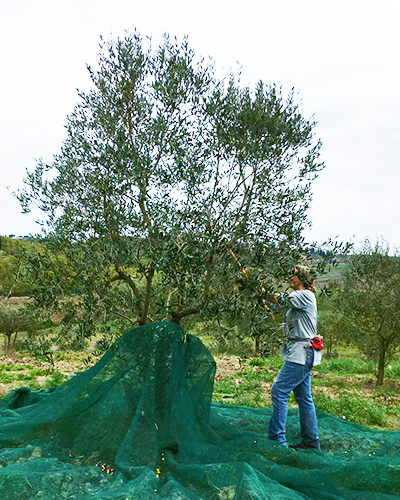The magnificent hills and countryside surrounding Florence are beautiful to visit for a relaxing day and represent a territory where excellent wines are bottled and a wide variety of olive oil is produced.
For most producers in Tuscany, the olive harvesting and oil production week have just ended. The final product of this fascinating process is the so-called “Olio Nuovo” which means new oil. Unlike wine, which generally gets better and improves over time, olive oil should be preferably consumed as soon as possible, for it not to lose the organoleptic properties that are more intense at an early stage.

The production process is simple: the olives can be hand-harvested or with a special machine that shakes the tree vehemently, causing the olives to fall onto a net placed on the ground surrounding the tree. Once the olives have been harvested, the oil must be extracted by pressing them mechanically. We then go ahead and separate the oil from the water. Once this key step has been completed, the oil is finally stored, clarified, and bottled.
In the past, people used huge terracotta vases called “orcio” to store and conserve olive oil. Today the “orcio” are often used to embellish a garden or to grow beautiful plants and flowers. For hygiene reasons, it is no longer possible to use these ancient and beautiful vases, but we instead rely on steel tanks which are unfortunately less romantic, but which better preserve the quality of our olive oil.
When it comes to olive oil it is important to point out that there are several categories, based on the quality of the product. We can generally divide these categories into four, from the lowest to the highest quality are the following: Pomace Oil, Refined Olive Oil, Virgin Olive Oil, and Extra Virgin Olive Oil.
Now let’s move on to the practical part. What kind of food and dishes should you put the oil on? The answer is simple: oil can be put almost anywhere.
From appetizers to the second course, from the main course to side dishes (and why not sometimes even on some desserts) the oil enhances and accentuates all the flavors of the food we eat. It can be used for very simple dishes such as the “bruschetta” (toasted bread and garlic) or more important ones such as a Florentine steak. It is also a product that is very good for one’s health.
So, if you have some space in your suitcase, make sure to bring a bottle of extra virgin olive oil with you when you return to the States. It is a flavor that will bring back memories of your wonderful experience in Florence and will be a way to have a small piece of Tuscany always with you.

The olive harvesting season in Tuscany starts in late October and ends in mid-November.
By Giacomo Cipparrone, ISI Florence | Student Life
